3 March 2019
We made it back to the states (Apache Junction – Phoenix, AZ) from Guyana; what a beautiful country and great birds. Many of the birds I’ve seen before in our travels of South America, but always good to see them again. And we had new ones as well, like the Harpy Eagle. That was such a great bird to see – the “trip bird.” And to see three Harpy Eagles. What a great birthday gift for both Jack and I.
Back on the road again; we left Apache Junction around 11:30 a.m., making a brief stop at Fry’s (think Kroger’s or Fred Meyers) to re-supply food and ice for the trip ahead. We then slugged our way across the AZ/CA freeways to the Salton Sea State Recreation Area, and specifically to Salt Creek Campground where we are camped for the next two nights. It was a Sunday so there was a lot of traffic on the road. Seems like most of the cars that passed us on Interstate 10, while still in Arizona, were cars with California plates – not sure what they were finding in Arizona?
We had read that the Salton Sea was in crisis mode – too much salt, not enough fresh water. However, the water level didn’t seem too much different to us than what we’ve seen in previous years, but usually the beach is littered with dead fish (Tilapia) – none to be seen now. We also didn’t see as many pelicans or cormorants as we normally do, but the pelicans may have already left for their breeding grounds. I’m just not sure. At least I hope that is why there were so few pelicans here. We usually visit this area in January. It is one of our favorite birding spots.
As I mentioned we are staying at the primitive Salt Creek Campground. There are six other campers here. The site could probably accommodate another three campers comfortably. When we got here two yahoos had tried to drive onto the beach and got stuck – serves them right. The beach isn’t composed of sand, rather it is composed of shells or should I say skeletal remains of fish, specifically Tilapia.
We did walk the beach and did a little birding before enjoying a beautiful sunset. There are hundreds of Eared Grebes, Ring-billed Gulls, and California Gulls on the beach and water. Added to the mix were a few shorebirds as well – Marbled Godwit, Black-bellied Plover, Least Sandpiper, and Black-necked Stilt.



4 March 2019
We got an early start birding – 7:30 a.m. (well early for us when camping). Today we birded areas around the Salton Sea, including the Sonny Bono Salton Sea National Wildlife Refuge. In all we saw a total of 69 different species. Not too shabby for about 7.5 hours of birding. The highlights were the Burrowing Owls along English Road (six of them) and the Snowy Plover on the sea shore at Sonny Bono NWR. Oh, and two Greater Roadrunners. One was resting on a kiosk and another was standing on a pile of dead limbs. I got within photographing distance of the latter one when a truck came up behind us (this happen a lot) and we had to move, thus flushing the bird.
I sent a photo of our campsite at the Salt Creek Beach Campground to a friend and her comment was on how bleak and stark the area looked. Many places along the lake are stark. The lakeshore is changing – one place we’ve camped in the past that had great views of the sea has changed. Instead of seeing the sea we now see an invasive plant species – Salt Cedar. This invasive plant is taking over everything. Not good. I hope the state does something to try and keep it in check. Costly though.
When we got back to our campground two additional spots were taken and everyone here last night had departed except for one camper. There is a big RV behind us and they are using their generator. This would drive my friend Bob crazy. It is kind of annoying. Bad enough we have to listen to the occasional (okay, frequent and very long) trains that pass nearby.

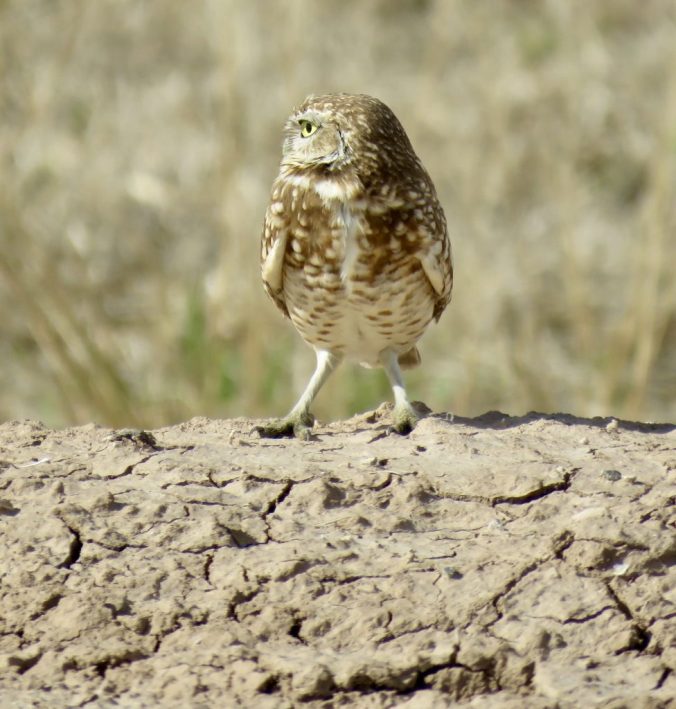























5 March 2019
Today was a travel day. We left the Salton Sea early and made it to Clovis, California, around 3:30 p.m.


6 March 2019
We spent the day visiting with my sister Pam, her husband Dan, and daughter Angie. Angie painted a really cool bird for Homer’s Shorebird Festival’s 6×6 canvas Art Auction. Check out the auction and bid at https://www.biddingowl.com/Auction/index.cfm?auctionID=3710. Bidding begins April 5, 2019.
Here is her painting of a Black-billed Magpie

7 March 2019
Today was a lazy day at my sister’s house. We did laundry; I worked on my blog (Guyana, Part 1); and watched several home improvement TV shows. Jack is glad we don’t have TV reception at our home in Homer.
8 March 2019
The goal today was to get to Boulder Creek, California, to visit Jack’s sister, Mary. We made a stop at the San Luis National Wildlife Refuge near Los Banos, California. We drove the waterfowl route – about 11 miles, and observed 47 different species. We like ‘discoveries’ – a female “Tailed Toad”- a very distinctive looking toad (see photo).



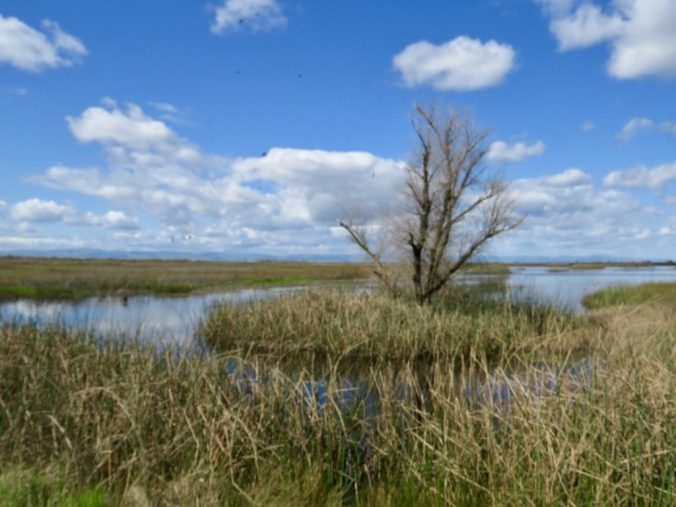






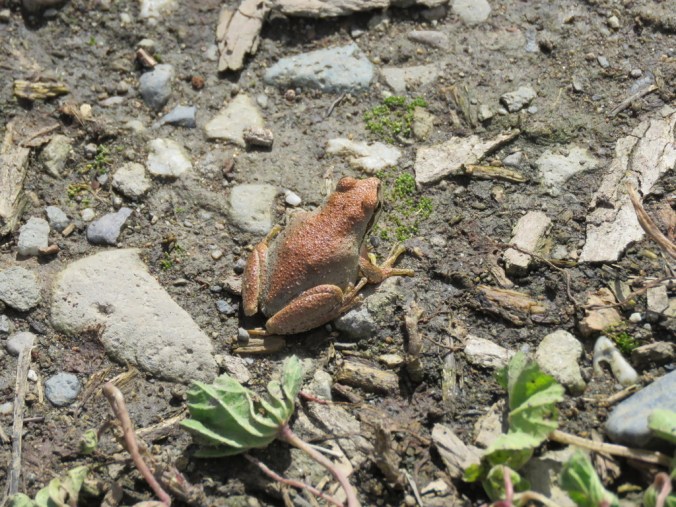






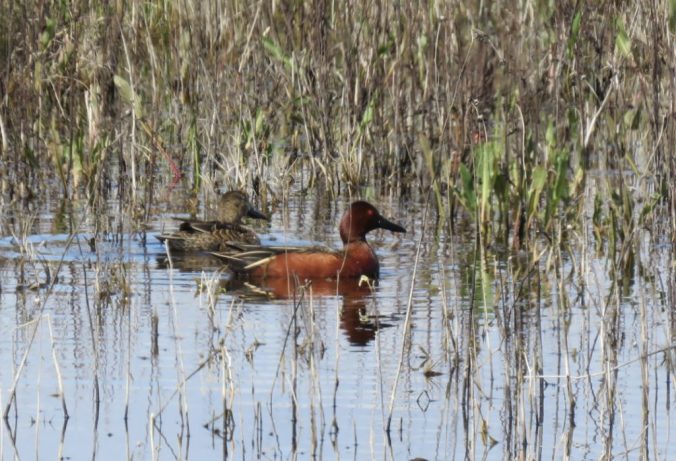


To get to Boulder Creek, which is a very hilly, treed area (think Redwoods), we drove the Bear Creek Road. I think this road rivals the Dragontail Road in North Carolina for the number of turns in 11 miles. I didn’t count the turns, but it seemed as though we were always turning left or right with precipitous drop-offs and no road shoulder. And since we don’t travel fast in our van on turns (things go flying about) the drivers behind us were none to happy with our slow-down. Going up we didn’t have any turnouts so the drivers had to wait. Going down we had numerous turnouts and used them regularly. Took us awhile to get to his sister’s house. Personally, I would not want to live in this area. It’s beautiful, but the road in and out is not my cup of tea (I’d need something stronger and we aren’t talking about coffee). Plus all the tall trees are kind of claustrophobic.
9 March 2019
We woke to rain. This area normally gets around 48 inches of rain a year, and they’ve had 60 inches of rain already and it is only March. Wet, wet, wet.
At noon we were eating lunch when I heard a commotion outside. I went out to see what was going on and it appeared some guy was accosting a woman. Turns out he was consoling her because just then Jack said, “that house is on fire.” Sure enough the woman’s house looked to be totally engulfed in flames. The fire department here is voluntary, and they did an excellent job of getting the fire contained. Luckily with this wet weather the fire didn’t spread through the trees and engulf neighboring houses. That was our excitement on this otherwise quiet day.

Much of my day was spent trying to find the best flights for our trip to Uganda. Air travel has gotten so expensive lately with fewer flight options. I was hoping to stop off in London and do some birding in the Norfolk area. A flight on Icelandic Air from Anchorage to London was $2500. Ridiculously expensive right? And I hate having to pay extra to get seat selection at the time of booking. Really??? So nixed the Great Britain stopover.
Jack’s nephew and family came over for dinner and a spirited game of Taboo. We had a wonderful meal and an enjoyable evening with family.
10 March 2019
Another wet day. In the afternoon we went to Henry Cowell Redwoods State Park near Boulder Creek, California. The redwood trees here are amazing; so tall and majestic. We did the 0.8-mile Redwood Grove Loop trail. Not many birds, although we did see a pair of beautiful Varied Thrush out in the open, and me without my camera. We also had several Townsend’s Warblers. During the hike I kept smelling something that smelled like food. Turns out the park is full of Bay Laurel trees, and thus “Bay Leaves”. Stepping on the downed leaves emitted the smell.



After our hike we went to visit Jack’s nephew and his family at their newly remodeled home – very nice. And, we got to see the 4-H quail project. Always a delight.
11 March 2019
Time to move onward. I always hate to say goodbye to Jack’s sister Mary as she always makes us feel so welcomed. Love her.
We slogged our way through the congested San Francisco/Oakland area to Santa Rosa to spend the remainder of the day and night with Ken Wilson. Ken owns Talon Tours, the tour company we used for Guyana. We got to meet Ken’s wife Becky who wasn’t with us on the trip. Both Ken and Becky will be joining us on our Uganda trip in September. They have a tree at their house that the birds love, including about 11 Cedar Waxwings and a pair of Western Bluebirds – so I got my ‘birding fix.’ We had a very enjoyable, but short, visit.




12 March 2019
We left Ken and Becky’s house early (6:45 a.m.) as they were headed out for a previously planned full-day Birdathon fundraiser (later we learned they saw 127 different birds in one day). We departed with them as we wanted to get an early start to Bridgeway Island Pond in Sacramento to try and see the Garganey – a duck species rare to the U.S. This is an Euroasia species. For some reason this duck decided to check out Sacramento.
Surprisingly at this small pond, we had a total of 44 species. And we did get to see the Garganey, a life bird for Jack and I. The bird was a male, and a very distinctive one at that. Hard to miss, even when it has its head tucked into its wing. The bird was some distance off so I was unable to get a decent photo. We stayed at the pond for 90 minutes. There were lots of Marsh Wrens singing away on the tops of reeds, so I had to try and get photos of these charismatic birds. I counted at least nine, but I suspect there were a lot more than that.









Afterwards we headed north with the intentions of driving the Colusa National Wildlife Refuge auto tour route. Unfortunately, the tour route was closed due to flooding. Our loss, but California’s birds gain. CA has been in a drought for so many years, any precipitation is appreciated and badly needed. So we continued north and went to the Sacramento National Wildlife Refuge. This is one of our favorite refuges.
We drove the 6.0-mile auto tour route and saw 46 different species. We were surprised that we did not see any Snow Geese. Maybe they’ve already headed north for the breeding season. There were thousands of American Coots and Northern Shovelers. Ducks in general were plentiful. We also had seven different shorebirds, including the Black-bellied Plover, which haven’t been reported before at the refuge – at least not on eBird.



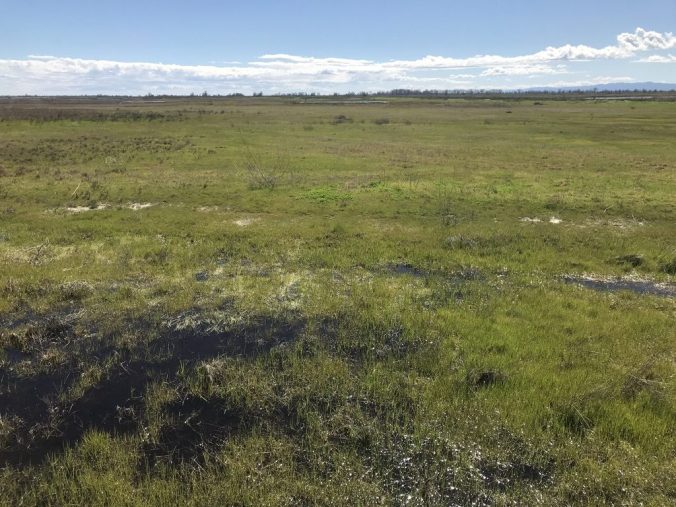











There were also a number of jackrabbits at the refuge. Guess the coyote population must be down.


Tonight we are staying at the Buckhorn Recreation Area, located at Black Butte Lake. This campground is managed by the Army Corp of Engineers. There are nine other campers here tonight. Last time we stayed at this campground I think we were the only one’s here. That was in 2016.



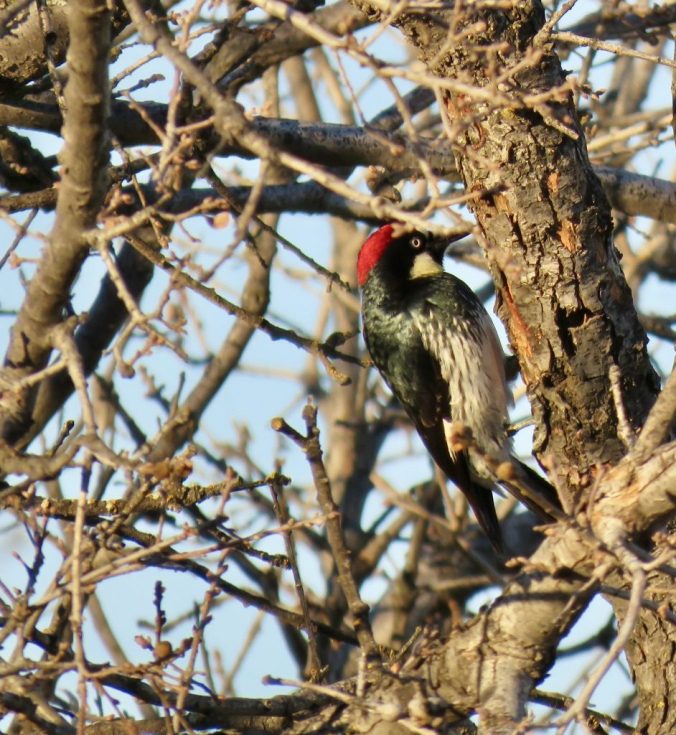




13 March 2019
We greeted the day with a windy morning so we decided to head west to the coast. We will spend a few days driving from Fortuna, California, north to around Seaside, Oregon, before heading to Portland. We need to be in Portland by 19 March, so we have about six nights of camping or hotels. Tonight will probably be a hotel because many of the campgrounds (state) around Fortuna are closed for the season.

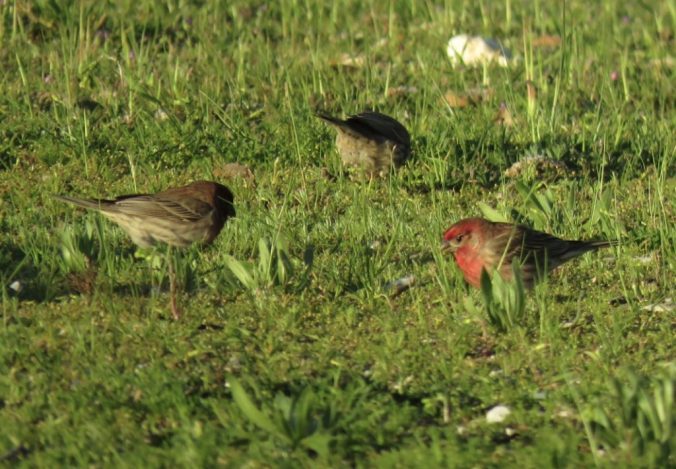

We chose to get to the coast via Highway 36 because it is supposed to take less time than the other routes. Hmmmm. I wonder if that sign showing curves for the next 140 miles is an indicator that this might not be the quickest route for us. Our van doesn’t always handle well on curves – or rather we need to secure everything. Jack likes to take it nice and slow instead of stopping for flying objects inside the van. Our pace makes other driver’s crazy. We lucked out and didn’t have much traffic until we got close to Highway 101. The trip took us an additional hour of travel time than what Google Maps indicated. It was a beautiful drive however. Lots of snow up high, but luckily the roads were clear.

We stopped off at the Humboldt National Wildlife Refuge and spent about two hours birding the refuge. There was a lot of waterfowl present, including twelve Tundra Swans. I wonder if they winter here? An Eurasian Wigeon was present, which was nice. Haven’t seen one of those in awhile. We get them occasionally in Homer. I think last year I had three of them at Beluga Slough.






Shorebirds present included a Long-billed Curlew. This bird was feeding next to a Western Gull and they appeared to be about the same size. This curlew looked huge. There were also Willet, Marbled Godwit, Long-billed Dowitcher, Greater Yellowlegs, Least Sandpiper, and a single Dunlin. And there were at least 11 Marsh Wrens singing their hearts out – must be breeding time. These birds get up onto the reeds to sing allowing us decent looks at this elusive bird. In all, we had 38 species. The day was sunny, but the wind was fierce and thus a cold wind-chill.



We did see a river otter at the refuge. And a few ground squirrels – too far away to photograph or identify.
We stopped in Arcata for dinner at a Vietnamese restaurant. We’ve eaten there before and enjoy the food – Pho Hoang on “G” Street. Then we made a stop off at the Wilderness Market to buy some Humboldt Chocolate, which is oh so good (addictive). My favorite. I’ve never seen it sold anywhere else but here.
14 March 2019
We stayed at the Day’s Inn and Suites just north of Arcata last night and it was the quietest night I’ve EVER spent at a hotel. Loved it. No noisy neighbors.
We left the hotel around 8:00 a.m., stopped for groceries, then headed to Arcata Marsh and Wildlife Sanctuary – a wonderful managed wetland utilizing waste water. Our first stop was Humboldt Bay, and a good thing too as the tide was going out. We did get to see a fair number of shorebirds, many of which will be making their way to Alaska in another month or so. While there weren’t too many near us, if you glassed the bay you could see thousands and thousands of shorebirds in the distance. I wish they would have been closer.



We then proceeded to the “marsh” itself, and spent about two hours walking the trails and birding. We didn’t get any new birds for the year, with the exception of a Red-shouldered Hawk and a Black-capped Chickadee. Surprisingly we hadn’t seen a Black-capped Chickadee yet this year.



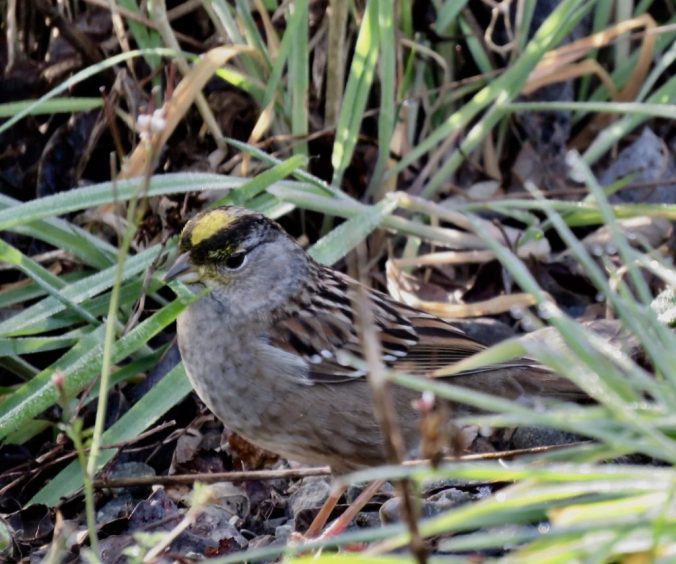











Traveling north, we stopped at Crescent City and checked out the sea lions that like to soak up the sun at the Crescent City Harbor. There were also Harbor Seals present. We did see a fair number of loons, although most were too far away for me to identify. Leaving Crescent City we traveled north to our campground for the night – Cape Blanco on the southern Oregon coast. I thought we had camped here before, but now I’m not so sure as the campground doesn’t look familiar. We got a nice spot (#16) and I was surprised that at least 1/3 of the 54 campsites were occupied for the night. I didn’t expect to see so many campers here. Maybe campers like it because it is six miles from the highway, rather than like many campgrounds that are right along side the highway with all the traffic noise.










We will spend then next two weeks in Oregon and Washington before heading home. Until then …
IT’S A GREAT DAY TO BIRD
Leave a Reply